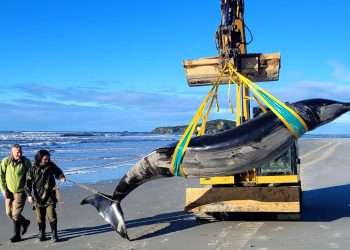ANCIENT humans lived in lava tubes inside cave systems around 7,000 years ago, according to a new study.
The lava tube in question is called Umm Jirsan and is located in Saudi Arabia.

The ancient cave system is located in Saudi Arabia[/caption]

This ancient cave art helped to support the scientific theory[/caption]
A new study about the lava tube was published this month in the journal PLOS One.
“Our results reveal repeated phases of human occupation of the site ranging from at least the Neolithic through to the Chalcolithic/Bronze Age.
“Pastoralist use of the lava tube and surrounding landscape is attested in rock art and faunal records,” the researchers wrote.
A pastoralist is a term to describe someone who raises livestock.
It’s often used to describe nomadic herders or ancient farming practices.
Long-lost cave art supported the scientist’s claims that those living in the lava tube were farming certain kinds of animals.
Sheep and goats can be identified as well as long-horned cattle.
The art was left inside the lava tube as well as bones from these animals.
Lava tubes are formed when flowing lava from a volcano moves beneath the hardened surface of a lava flow.
Once the lava dissipates a new cave formation can be left behind.
This is what happened in the case of Umm Jirsan and researchers aren’t sure when the last lava flowed there.
The lava tube in question has horizontal passages that are about 4,859 feet long.
“The lava tube does not appear to have served as a permanent habitation location, but rather as a site that likely lay on herding routes and that allowed access to shade and water for passing herders and their animals,” the researchers explained in the study.
“Prior to this, as well as during pastoral periods, the lava tube was likely also linked with hunting activities, which probably remained a cornerstone of local economies into the Bronze Age.”
Today, the practice of using lava tubes for shelter is still said to occur in the same region, according to Live Science.
































